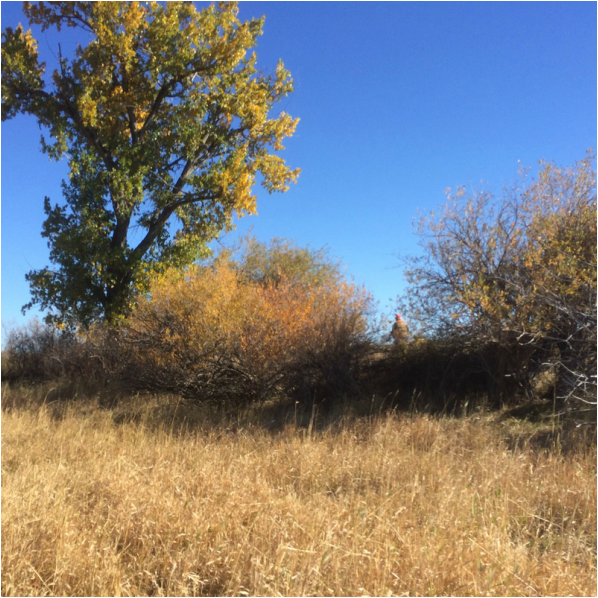Chopi, the red dog, nose high in the air, catches bird scent.
Quickening his pace to a brisk canter
He weaves a serpentine trail through the rushes
Up the coulee into the wind.
Bolting to the thorn apple grove
Nose to the ground infusing the top notes of dry grass, sage and upland birds
He slams to a stop—a copper statue.
I slide the safety off and shoulder my shotgun
Ready to shoot: a cock pheasant, Hungarian partridge, sharp-tail grouse?
What lies hidden in the brush?
An explosion of broken branches reveals no bird.
Backward I reel, suck deep catching my breath
And freeze like the dog on point!
A white-tail buck sporting a tree of a rack
Erupts from the thick shrubs and high tails to the distant horizon.
I lower my gun, slide the safety on, and marvel at what I flushed
When the familiar cackling of the gaudy ring-neck pheasant
Yanks my attention.
I point my gun, and lead the bird.
But the trigger won’t pull so
I laugh at the lost bird, now too far away--
Saved by the buck I still see
Bounding across the sun-lit wheat field.
-Sally Baldwin
Quickening his pace to a brisk canter
He weaves a serpentine trail through the rushes
Up the coulee into the wind.
Bolting to the thorn apple grove
Nose to the ground infusing the top notes of dry grass, sage and upland birds
He slams to a stop—a copper statue.
I slide the safety off and shoulder my shotgun
Ready to shoot: a cock pheasant, Hungarian partridge, sharp-tail grouse?
What lies hidden in the brush?
An explosion of broken branches reveals no bird.
Backward I reel, suck deep catching my breath
And freeze like the dog on point!
A white-tail buck sporting a tree of a rack
Erupts from the thick shrubs and high tails to the distant horizon.
I lower my gun, slide the safety on, and marvel at what I flushed
When the familiar cackling of the gaudy ring-neck pheasant
Yanks my attention.
I point my gun, and lead the bird.
But the trigger won’t pull so
I laugh at the lost bird, now too far away--
Saved by the buck I still see
Bounding across the sun-lit wheat field.
-Sally Baldwin



 RSS Feed
RSS Feed